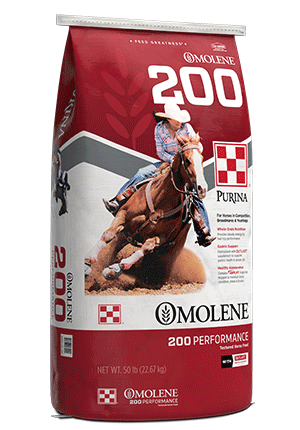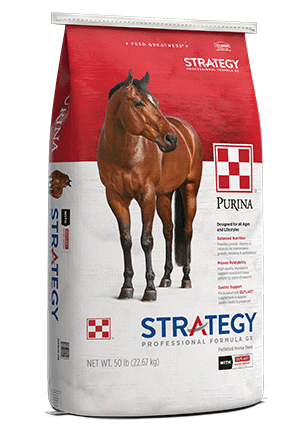
Nutrition for Sales Preparation
Nutrition : General Nutrition
Nutrition : Ingredients & Nutrients
For breeders and marketers of young horses, a solid sales prep nutrition program is integral to success.
You’ve made it through the long haul of carefully pairing mare and stallion, anxiously awaiting foaling, and then carefully guiding the foal through its early life… now for the fun part, preparing them for sale. Nutritional approaches vary widely across breeds and disciplines, but the ultimate goal remains the same: presenting a young horse at their very best. Whether you are preparing weanlings, yearlings, or older horses, start early. Sixty days is a minimum and 90 to 120 days out is more ideal to implement changes and see the maximum result. Of course, it is much easier to start with a horse raised on a quality feed program rather than to play catch-up. For a more detailed discussion of proper foal feeding, click here.
Forage first: As always, forage is the base of the feeding program and should be chosen carefully. A highly digestible grass or alfalfa hay will provide steady calories while helping to minimize the potential for a ‘hay belly’ appearance that can be caused by poor quality forage. Some youngsters will be moving from grazing all day in a pasture to eating hay in a stall for the first time. Monitor hay intake to ensure they have made the transition successfully. Low hay intake can be both a cause and a symptom of gastric ulcer development. For the easiest keepers, it may be necessary to select a more moderate quality hay that they can eat throughout the day without causing excess weight gain.
Choose the right base feed: The better the base feed, the less supplementation will be necessary and the more economical the program, so choose a nutrient-dense, well-fortified commercial feed. These horses are still growing so it is important to select a ‘growth’ or ‘all life stages’ formula that has the appropriate amino acid, vitamin, and mineral content to support continued development. This will also help to ensure a correct ratio of nutrients to calories and prevent putting on too much fat too early and slowing growth. Strategy® GX and Impact® All Stages feeds are options that fit well in a wide range of scenarios.
In programs that desire an accelerated growth rate, feeding rates can get rather high. To maintain meal sizes at or below the rule of thumb of no more than 0.5% of body weight per meal for digestive health, a feed that is high in calories per pound like Omolene® 200 or Ultium® Growth is an excellent tool.
For easy keepers or earlier maturing/more compact body types, it may be necessary to use a ration balancer such as Enrich Plus® if feeding rates dip below stated minimums to meet nutrient requirements. The same is true in cases where slower growth is desired or developmental challenges need to be managed.
Gastric health: This stage in a young horse’s life (diet changes, decreased turnout, increased exercise and other stressors) can create the ideal conditions for gastric ulcers to develop. Watch for symptoms including picky eating, poor weight gain and behaviors like stall vices and poor attitude during grooming. In addition to promoting consistent forage intake with no more than 6 hours of fasting throughout the day and managing stress, the use of Outlast® Gastric Support Supplement can help to maintain gastric comfort. It can be top dressed on any feed program; serving recommended is two per day plus an additional serving before stressful events like vetting or hauling. Additionally, many Purina feeds contain Outlast supplement conveniently built in.
Muscle development: A well-muscled, athletic body type is often the goal. Whether included routinely for every horse, or applied to those individuals who could use extra help filling out, strategic amino acid supplementation can give an additional boost. SuperSport® Amino Acid Supplement has been shown in research to support muscle development and fat free mass compared to horses supplemented with added protein from alfalfa. Allow for a minimum of 60 days to capture the full muscle development benefit.
Bloom & shine: The finishing touch in any program is getting that perfect degree of bloom and a shine that indicates good health inside and out. The hay and feed program should do the heavy lifting in terms of reaching optimal body condition and weight, but for harder keepers, added fat will increase calorie density of the diet. Amplify® High-Fat Supplement has more calories per pound than ingredients like rice bran and is more readily accepted by horses in larger quantities than added oil. If weight gain is not desired but skin and coat health need more support than just elbow grease can provide, an oil high in omega-3 fatty acids such as Omega Match® Ahiflower Oil is a potent tool to get that last bit of dazzling shine.
There is much more to presenting young horses in their best light than just feeding. It is just as important to implement an appropriate exercise and conditioning regimen, proper deworming and vetting schedules, and to instill good ground manners. The principles outlined above provide a framework for designing a comprehensive nutrition plan and can apply to any sale prepping scenario or anytime you need to get a horse looking their best.
Contact Purina Animal Nutrition for any questions you may have on nutritional support to help present your young horse at their very best.





